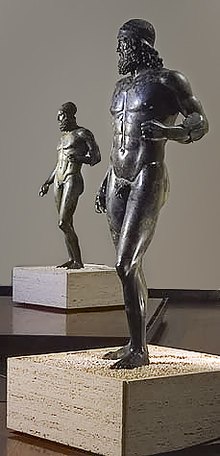You can help expand this article with text translated from the corresponding article in Italian. (December 2008) Click [show] for important translation instructions.
|
 The Palazzo Piacentini which houses the museum | |
| Established | 1882 |
|---|---|
| Location | Palazzo Piacentini, Piazza De Nava, 26-89100 Reggio Calabria, Italy |
| Coordinates | 38°06′53″N 15°39′04″E / 38.114722°N 15.651111°E |
| Website | museoarcheologicoreggiocalabria |

The Museo Nazionale della Magna Grecia (National Museum of Magna Græcia), Museo Archeologico Nazionale di Reggio Calabria (National Archaeological Museum of Reggio Calabria) or Palazzo Piacentini is a museum in Reggio Calabria, southern Italy, housing an archaeological collection from sites in Magna Graecia.
Initially formed with a nucleus of material ceded from the city's Museo Civico in the 19th century, the Museo Archeologico Nazionale della Magna Grecia then grew via many discoveries in various excavation campaigns in the ancient city-states of Calabria, Basilicata and Sicily by the Soprintendenza Archeologica della Calabria right up to the present day, including the Riace bronzes. They are extremely important for studies of the 8th century BC, but also has several objects from the prehistoric and protohistoric periods which preceded it and the ancient Roman and Byzantine eras which followed. Today new finds in Calabria are no longer displayed and conserved in a single museum, but exhibited where they have been found, since the quantity of new discoveries has allowed smaller local museums to be set up for them (at Crotone, Locri, Roccelletta di Borgia, Sibari, Vibo Valentia and Lamezia Terme). These are taken together as the museo reggino.
